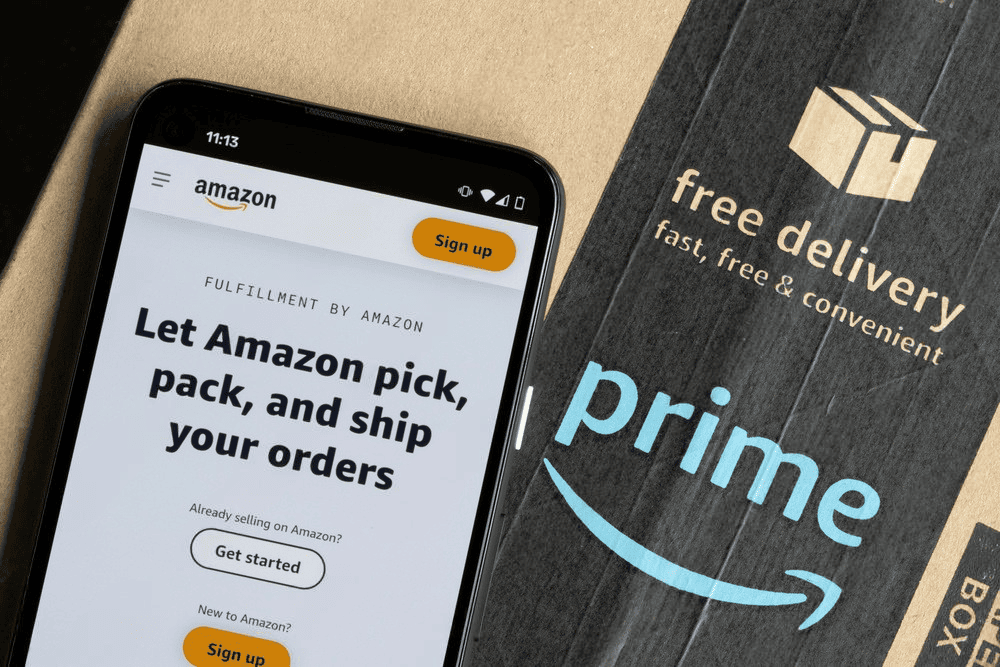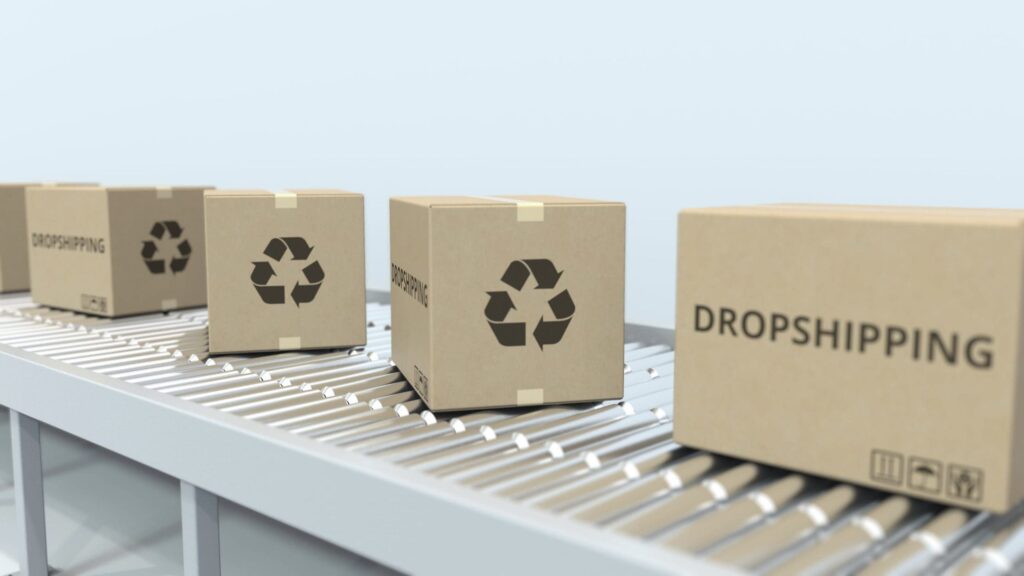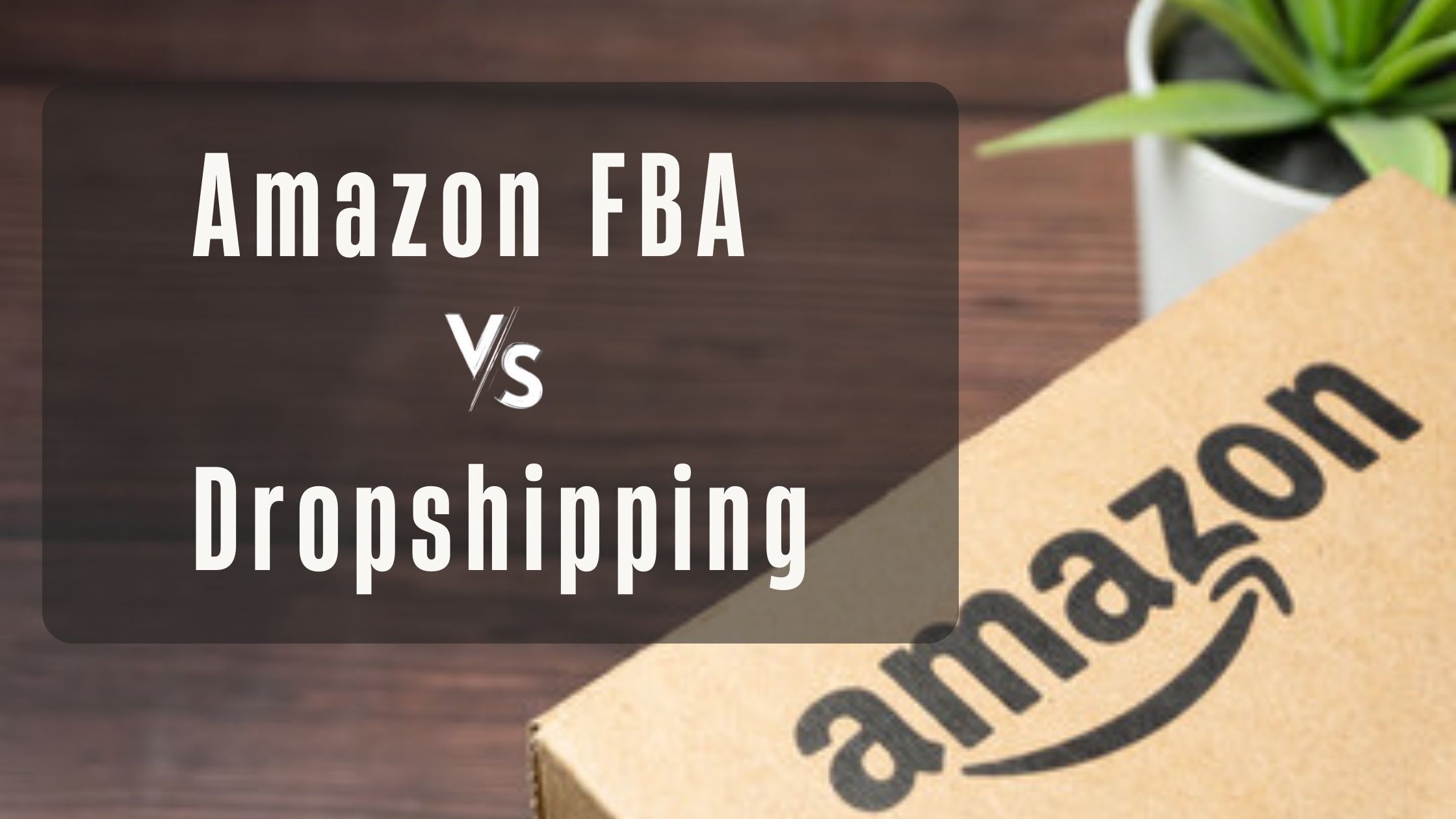Amazon FBA Vs. Dropshipping – Which is Better
The two most popular eCommerce business concepts are dropshipping and fulfillment by Amazon (FBA). Even though they may appear alike, drop shipping and order fulfillment have different inventory management strategies.
Owners of eCommerce stores benefit from both business models’ assistance with order processing and shipping. These are crucial for streamlining a store’s operations and enabling sellers to manage several orders effectively. Thus, while launching an online business, choosing an appropriate eCommerce model is essential.
From terminology to delivery prices to benefits and downsides, we will evaluate the key distinctions between Amazon FBA and dropshipping in this post. When it comes to choosing between dropshipping and Amazon FBA for online product sales, we will then give our final suggestions.
The two main fulfillment options for selling goods on Amazon are –
- Fulfillment By Amazon (FBA): you delegate your order fulfillment and storage to Amazon.
- Fulfilled By Merchant (FBM): Order fulfillment and storage are handled by you or a third party. FBM includes dropshipping.
Dropshipping, which is classified as an FMB, is a special kind of business where you don’t own the product; instead, you just post it for sale, wait for it to sell, and then transmit the order to your supplier. It just needs a small initial outlay of funds.
Amazon FBA: What is it?
Fulfillment by Amazon, or FBA, is a service that Amazon offers merchants that takes care of all order fulfillment, storage, returns, and customer support. With 89% of sellers using the service, Fulfilment by Amazon is by far the most popular option for merchants.

FBA is an excellent way to manage your Amazon business, regardless of whether you sell private label goods, resell goods through retail arbitrage, or sell goods wholesale.
Sellers using Amazon FBA can track factors influencing their Inventory Performance Index (IPI) score by logging into the Inventory Performance Dashboard. The seller toolkit can also be used to manage overstock, monitor the age of inventory, update product listings, and keep stockpiles.
Moreover, it provides shipping incentives to assist FBA sellers in lowering their delivery costs and boosting their profit margins.
Benefits and Drawbacks Of Amazon FBA
We shall discuss the main advantages and downsides of the Amazon FBA technique here.
Benefits:
- Simple To Begin – Selling with Amazon FBA involves a straightforward process: register a seller account, list your products, prepare and send them to Amazon’s fulfillment centers, and then hand over the delivery to Amazon. However, putting it into practice can be challenging. You can simplify the process by working with professional Amazon FBA consultants. Their expertise not only provides you with valuable guidance and support but also helps you manage your inventory and seller account and increase sales.
- Customer Service Is Not Required – Taking care of clients could take a long time. The best thing about FBA is that Amazon’s customer support will answer your buyers’ questions. Customers don’t have to pay extra FBA costs to use this service, and they can contact Amazon at any time.
- Instant Access To A Worldwide Viewership – Because it reaches a global audience, Amazon FBA assists eCommerce companies in growing their businesses. For instance, quick shipping in European nations is supported by the FBA Pan-EU program. Additionally, FBA Export can help you expand your online business into more than 100 nations.
- Simple Policies For Refunds And Returns – A customer returns policy and support are offered by Amazon’s FBA program to customers who wish to return goods they have purchased. Customers can quickly apply for the following processes through the online return center: reimbursement, replacements, refunds, and returns.
Drawbacks:
- Intense Rivalry – Since Amazon is one of the most widely used online marketplaces, you can come across other companies offering comparable goods at a lower price. Make sure you do your homework and choose the top, least competitive, in-demand products. Remember that it could take more work to compete with more seasoned Amazon merchants.
- Earnings Are Not Promised – Not every product will bring in money for your company with ease. Some might sell rapidly, but to keep steady revenues, you should think about using eCommerce marketing techniques and establishing competitive prices.
- All Sales Take Place On Just One Platform – As opposed to other business strategies like drop shipping, you are limited to using Amazon’s platform to sell things online. Any modifications to the selling policy or cancellation of your Amazon account will, therefore, impact your eCommerce business.
- Customers Are Part Of Amazon – Your consumers are members of Amazon’s membership when you use the Amazon FBA business model. Consequently, you are unable to use contact information to develop tailored campaigns such as email listings or affiliate marketing to increase client loyalty for your business.
- Lost Stock On Hand – While some of your merchandise may be lost during the receiving process, don’t worry—Amazon will pay you back for any lost goods.
Dropshipping: What is it?
Dropshipping is the practice of an online retailer listing a product for sale and having it sent directly from a manufacturer or supplier without having to buy any inventory upfront. Due to its simplicity of setup and low initial cost, dropshipping is a well-liked business strategy among Amazon, eBay, and Shopify vendors.

There are tight rules that drop shippers on Amazon must abide by, or else Amazon will suspend your account. For instance, dropshipping purchases from other shops like Walmart are prohibited by Amazon for vendors.
All packing papers, invoices, and external packaging must list the seller’s name only (without mentioning the manufacturer or supplier that sent the goods).
Benefits and Drawbacks Of Dropshipping
The low initial investment required for this business strategy attracts a lot of aspiring e-commerce entrepreneurs. However, there are a few factors to take into account before determining whether or not to dropship. Let’s discuss the benefits and disadvantages.
Benefits:
- Low Initial Outlay – The dropshipping business strategy spares you from having to produce and store inventory. As a result, you can start your eCommerce business with more money saved.
- Reduced Accountability – All you have to do with this strategy is submit order information to your dropshipping supplier and maintain your eCommerce sites. Your supplier will take complete responsibility for the product delivery procedure, which will free you to optimize your company’s supply chain.
- Separate Location – With the dropshipping business strategy, you may manage your internet store from any location. To avoid problems with goods transportation, make sure your dropshipping provider is reputable and easily contacted. If not, you risk falling short of your clients’ expectations and harming your company’s brand.
- Not Upfront Investment – Aside from the initial minimal expenditures, your provider will take care of all operational responsibilities, so you won’t have to worry about them. Furthermore, collaborating with sizable outside logistics firms is not necessary. Dropshipping is, therefore, the perfect option for business owners with a tight budget.
Drawbacks:
- Reduced Profit Margins – Even if you can launch a dropshipping company on a shoestring, this could result in a lower profit margin. Upselling the products may not be successful, and you will be required to pay the provider a certain sum of money. This is a result of consumers beginning to search for alternatives that provide more value.
- Strong Rivalry – Dropshipping is a well-liked eCommerce business strategy, thus there is a lot of competition. Some competitors can be selling the same or comparable goods—even at a cheaper cost.
- Dependency On The Manufacturer – You don’t own the things you sell when you drop ship. As a result, while responding to client inquiries, you will need to rely on the information provided by your provider. On the other hand, providers could give inaccurate information on the delivery procedure. Furthermore, you might need to confirm with your suppliers when a consumer has specific inquiries about the products, which would need more time.
- No Authority Over The Quality Of The Item – The main problem with dropshipping is that you have no control over the quality of the products. You cannot closely inspect items that are being shipped because the manufacturer will take care of everything from packing to delivery. As a result, you must work with a reliable third-party source. To accomplish this, place your first order with them as a client.
What Distinguishes Dropshipping From Amazon FBA?
The only real difference between these two fulfillment strategies is who is the owner of the inventory. With both, a different business handles customer order fulfillment, freeing you up to focus on other tasks.
- Who is the inventory’s owner? Dropshipping and Amazon FBA differ significantly in that the former uses Amazon’s fulfillment network to process orders while you retain ownership of the inventory. For example, if you are selling private label goods, you will order a sizable quantity of inventory in advance from a supplier and ship it to an Amazon fulfillment center.
- When will the supplier ship the order? When you dropship, you don’t have to pay for any inventory until a consumer places an order. After listing a product for sale, all you have to do is place an order with your supplier, who will ship the item to your consumer as soon as you have an order.
- Who is in charge of customer service? Another distinction is that when you use FBA, Amazon will take care of returns and customer service.
- What happens to the returns? Dropshipping keeps you using the Amazon FBM fulfillment mechanism, which means that you, the seller, are still in charge of returns and customer support. Returns cannot be sent back to the manufacturer or supplier.
Which is Better, Dropshipping Or Amazon FBA?
The following elements should be taken into account when selecting an appropriate eCommerce model for your online business:
- Initial Outlay And Financial Commitment – Dropshipping and Amazon FBA are both simple to begin with. But, there are costs associated with using Amazon FBA. Dropshipping is a better online product sales model if you’re aiming for a low-budget eCommerce company.
- Customer Assistance – An expert support service is offered by Amazon FBA, which can enhance your client experience. As a result, unlike dropshipping, you don’t have to manage customer service yourself.
- Market Access – Dropshipping may make it so that some providers are unable to deliver to some locations. However, Amazon FBA enables companies to reach a global customer base.
- Profitability And Competitiveness Level – Dropshipping and Amazon FBA will create a fiercely competitive business environment, and your company’s revenue may fluctuate. To sustain consistent profit with dropshipping and Amazon FBA, you will require a long-term strategic plan.
- Quality Assurance – You can retain the quality of your products before shipping them to Amazon fulfillment centers by using Amazon FBA. Dropshipping makes it impossible to maintain quality control because you do not own the products.
- Additional Characteristics – Easy return policies, inventory tracking, and shipping promos are all provided by Amazon FBA. In the meantime, dropshipping does not offer these options.
In general, dropshipping and Amazon FBA are advantageous for owners of eCommerce businesses. Nevertheless, the magnitude and demands of your organization will determine which model is best for you.
Conclusion
For their enterprises, sellers can profit from Amazon FBA’s worldwide fulfillment networks and dependable customer service. To begin selling using this strategy, though, some investment is needed.
Dropship suppliers will handle all order processing and logistics, allowing you to maintain the product catalog on your website. However, dealers won’t have much influence over the caliber of the products.
Given the advantages and disadvantages, businesses with a well-established organizational structure are better suited for Amazon FBA.


